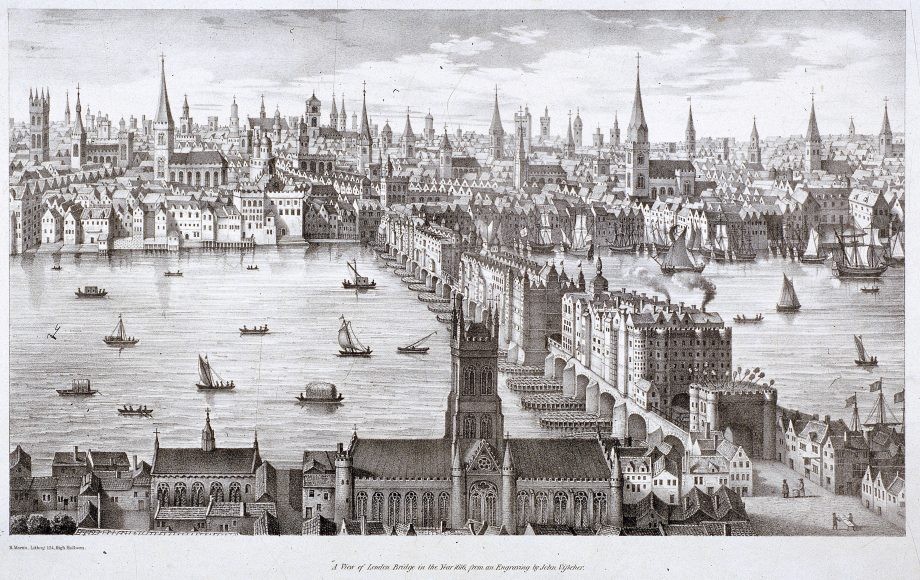Image citation: London Bridge (old), London, c1830. Artist: R Martin.
Upon hearing this question, a (stereotypical) economist is likely to jump to the ideological defence of whichever school they happen to fall into. A Keynesian economist might claim a lack of demand-side stimulus is preventing necessary investment into infrastructure and a positive multiplier, whilst a neoclassical might point to inefficient government regulations holding back economic growth. Both arguments have their merits, however, they only address the short-term elements of the Kondratieff wave.
To address this question, one must consider the factors that play into the long-term development of an economy: consistent economic growth over a substantial period of time. In the past one hundred years, we have seen economic booms play out across the world, from the Japanese Economic Miracle, German Wirtschaftswunder, and the Opening of China. On the other hand, we have also witnessed relative stagnation: transition economies that have opened to the free market in Eastern Europe and Central Asia have yet to experience the economic prosperity enjoyed by Western European counterparts.
Let us define a prosperous society. An inflation-adjusted GDP per capita is an often-cited measure; showing how abundant resources are for each individual in a society. There are several interwoven factors that must be present in order to facilitate this economic growth. It is worth noting, that throughout all of human history, prosperity was far from the norm. Western Europe only broke out of the Malthusian trap in the 19th century; historically speaking, the last two hundred years have been an aberration.
One element that is necessary for a prosperous society is property rights. An individual must be free to own the fruits of their own labour. There must be an expectation that in the future, an individual or community will be able to reap rewards from the work that they put in today. The way that this translates into a society is through property rights, protected by non-corrupt institutions. These institutions ensure that any goods cannot be arbitrarily seized, either by other individuals, but also from the institutions themselves. A businessman must be able to invest for the future, without fearing that everything they own will be stripped away from them due to the instability of society. Therefore, a level of order and stability in society must be maintained to maintain the incentive to invest in the future.
However, property rights alone do not create prosperity. That only comes with innovation. New ideas must be allowed to compete with old ones. In Western Europe, intense geopolitical competition between nations meant that there was a greater threat from falling behind in technology than by embracing new innovations. Competition between nations promoted the societal level of prosperity, just as competition between firms prevents a monopoly from being formed. Cultural, legal, and regulatory barriers to innovation must be diminished. In India and China for many centuries, there was a negative stigma associated with the introduction of anything new. Initially, it was only the fractured nation-states of Europe that saw innovation as a potential tool to gain a competitive edge. Individuals must feel confident in pursuing new ideas, and that doing so will improve their lives.
Why would an individual pursue new ideas? That brings in the next element of prosperity – commerce. The market is a testing place for ideas, the battleground of Schumpeterian creative destruction. New ideas must have some utility for society, and that utility is seen by what others are willing to pay for it. The market allows good ideas to be separated from bad ones, determined by the invisible hand of consumer choice.
There must also be a way to fund ideas. Another element of a prosperous society is thus the free movement of capital. Investors should be able to put their own wealth on the line in order to see it multiply, not only in their own ideas but in the ideas of other people. The discovery of the New World opened up a host of investment opportunities and allowed an inflow of capital into Europe. A healthy financial system separates prosperity from stagnation, as investors also feel able to safely bet on their own funds not being misappropriated. Of course, not all ideas are successful, but through competition between them, the market determines which will survive.
A common thread runs through these factors. Fundamentally, a prosperous society is one that believes the future can be better than the present, and one that is willing to gamble on that with its capital. This is secured through its institutions, with enough stability to prevent anarchy, but not too much regulation to the extent that it represses new ideas.
On the other hand, a stagnant society will limit the spread of new ideas for fear of upsetting the status quo. Cultural forces may repress innovation and commerce, in order to maintain a monopoly of ideas. There is a lack of competition, and there will likely be either ineffective or autocratic government. Property rights will not be respected, either by the government or other individuals. In these societies, there is no incentive to invest for the future, as it is seen as unlikely to reap any reward. Societies like this still exist, however, are fewer in number than they once were.
To conclude, one might surmise that prosperity comes from three factors: a freedom to innovate, an environment that facilitates commerce, and a strong protection for the right of an individual to reap the financial benefits from the creative destruction that comes from the intersection of them both.






